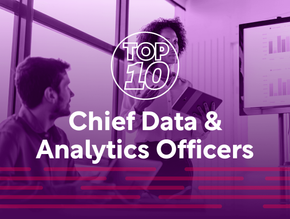Top 10 ways to protect organisations from cyber attacks

As technology continues to advance, cyber attacks have become increasingly common and more sophisticated.
With a report by Trend Micro finding that a third of global businesses suffered a serious cybersecurity breach in 2022, businesses of all size are at risk. What's more, the consequences of a cyber attack can be severe. Not only can they result in financial losses, but they can also damage a company's reputation and even lead to legal action. Therefore, it's essential for organisations to take proactive measures to prevent cyber attacks.
In this article, we'll explore 10 of the top ways for organisations to prevent cyber attacks.
10: Have a Response Plan in Place
Despite taking all the necessary precautions, cyber attacks can still occur. Therefore, it's essential to have a response plan in place to minimise the damage caused by a cyber attack. This plan should include steps for containing the attack, notifying stakeholders, and restoring operations as quickly as possible.
9: Conduct Regular Security Audits
Regular security audits can help organisations identify vulnerabilities in their systems and processes.
By conducting these audits, organisations can address these vulnerabilities before they can be exploited by hackers.
8: Monitor Network Activity
By monitoring network activity, organisations can detect and respond to security incidents quickly. This includes monitoring for suspicious activity and using intrusion detection systems to alert the security team to potential threats.
7: Limit Access to Data
Organisations should limit access to data to only those employees who need it to perform their job functions. This can help prevent unauthorised access to sensitive data and reduce the risk of data breaches.
6: Use Antivirus and Anti-Malware Software
Antivirus and anti-malware software can detect and remove malicious software before it can cause damage to an organisation's system. It's essential to keep this software up-to-date and run regular scans to ensure that the system is free from malware.
5: Backup Data Regularly
Data backups are critical in case of a cyber attack, as they can help organisations recover their data quickly. By backing up data regularly, organisations can minimise the damage caused by a cyber attack and ensure business continuity.
4: Implement a Firewall
A firewall is a network security system that monitors and controls incoming and outgoing network traffic. By implementing a firewall, organisations can prevent unauthorised access to their network and protect against malware and other threats.
Windows and Mac OS X come with their respective firewalls, aptly named Windows Firewall and Mac Firewall. Your router should also have a firewall built in to prevent attacks on your network.
3: Keep Software Up-to-Date
Hackers often exploit vulnerabilities in outdated software to gain access to a system. Therefore, it's essential to keep software up-to-date by applying patches and updates regularly. This includes not only operating systems but also software applications, plugins, and other components. Investing in a patch management system will manage all software and system updates, keeping your system resilient and up to date.
2: Strong Passwords and Multi-Factor Authentication
Passwords are often the first line of defence against cyber attacks, and it's essential to use strong passwords. Additionally, multi-factor authentication (MFA) systems require two or more factors to verify a user’s identity and grant them access to an account.
MFA provides reliable assurance that an authorised user is who they say they are, therefore minimising the possibility of unauthorised access. MFA is much more effective at protecting systems compared to passwords.
1: Train Employees on Cybersecurity Awareness
One of the most critical steps in preventing cyber attacks is to train employees on cybersecurity awareness. Employees are often the weakest link in an organisation's security, as they can unintentionally introduce security vulnerabilities. By educating employees on the best practices for cybersecurity, such as using strong passwords, identifying phishing emails, and reporting suspicious activity, organisations can reduce their risk of a cyber attack.
- Dell Technologies: Firms Expect AI to Transform IndustriesAI & Machine Learning
- Coca-Cola & Microsoft Partner to Accelerate Cloud and Gen AICloud & Cybersecurity
- Microsoft, AWS & Oracle: Why Big Tech is Investing in JapanDigital Transformation
- Zendesk Transforming AI CX with Anthropic and AWSDigital Transformation






